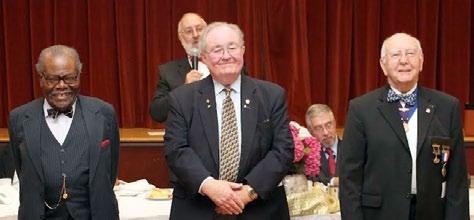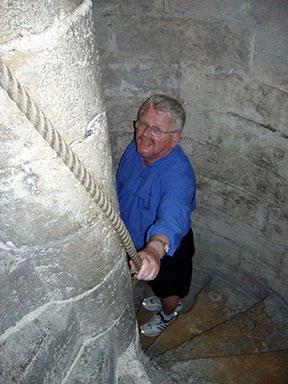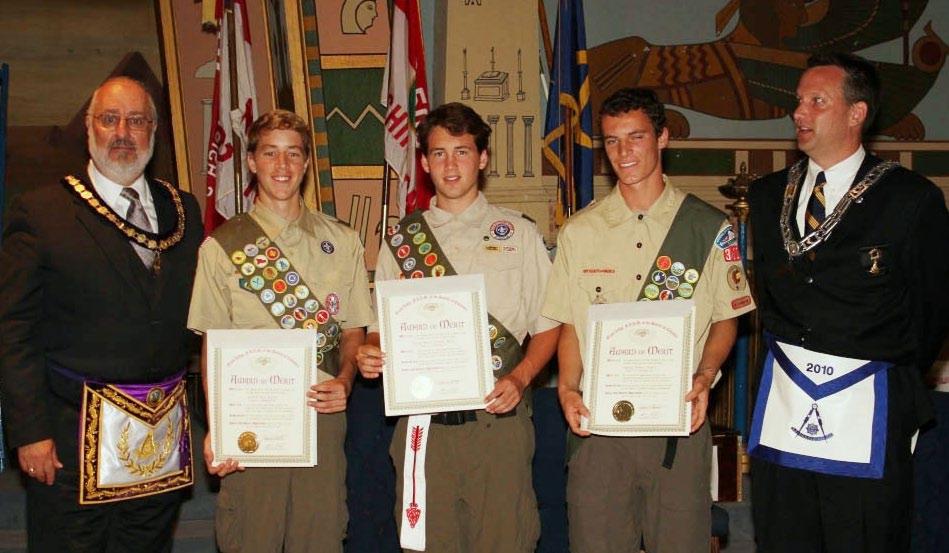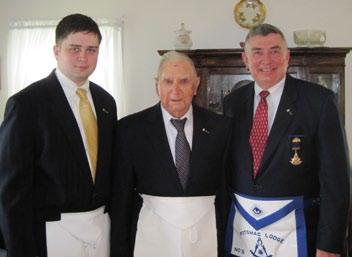
5 minute read
A Plea for Freemasonry – Revisited

For those inclined to the study of Masonic history, one of the most alluring aspects James D. Hodgkins has always been the timeless nature of our Master, The Colonial Lodge, No. 1821 teachings. While our rituals have evolved over the centuries, the core tenets that bring us together Worshipful Brother Mackey was an obvious choice have remained largely unchanged. An unfortuto give the evening’s oration. nate side effect of this is that the issues that face While the circumstances surrounding his address our fraternity are often timeless as well. were quite different from today, the lessons conThe interest and/ tained therein are or apprehension of absolutely timeless. the profane in FreeWhen examining his masonry seems to address, it is imporbe almost cyclical; tant to keep a few at times leading to thoughts in mind. unparalleled growth Mackey was writ(Golden Age of Fraing at a time when ternalism, 1870-1910) American Masonry and instances where was finally stepping our numbers were out from under the devastated (Morgan specter of the Morgan Affair, mid-19th cenAffair. Our numbers tury). Fortunately, a had dwindled subclose examination stantially in the shows that we are mid-19th century. on the cusp of both Also, Mackey was a quantitative, and, one of the last seriperhaps more imporous Masonic authors tantly, qualitative whose writing was growth in the strength characterized but of Freemasonry. This we refer to as the growth is only pos“Romantic School.” sible if we plan for and Thus, when his ideas actively cultivate it, regarding the origins otherwise it will pass of our ritual are disus by. Oftentimes, cussed, it is crucial ideas for the future to remember that his may be garnered from ideas about the histhe past. Albert Gallatin Mackey torical roots of the (March 12, 1807 – June 20, 1881) Craft have largely On the evening of Oct. been disproven by 20, 1870, Dr. Albert Gallatin Mackey gave an modern scholars, both Masonic and academic. address entitled “A Plea for Freemasonry” before All subsequent quotations come directly from Lafayette Lodge, No. 19 on the occasion of their Mackey’s address, the full transcription of which Grand Visitation. Being one of the most decorated is available on the Grand Lodge’s website: and accomplished Masonic authors in the United States and an affiliate member of No. 19, Right Download Transcription Now
Advertisement
The Puerility of Freemasonry “‘The absurdities and puerilities of Freemasonry are fit only for children, and are unworthy of the time or attention of wise men.’ Such is the language of our antagonists…” With this, Mackey begins his oration by defending the Craft against those who view it as an archaic and even frivolous organization. No doubt, every Mason has had friends or family asking what it is that we do in a Masonic lodge? What do we get out of it? Some are genuinely curious, but a great many others have already formulated their opinions on our fraternity and intend only derision. Mackey compares unfounded ideas such as these to the general public’s opinion of alchemy at the time of his writing. To the uninitiated eye, alchemy is merely the quest to transmute lead into gold. “So it is with Freemasonry. Those who abuse it know nothing of its inner spirit, of its profound philosophy, of the pure religious life that it inculcates.” The majority of our detractors have very little substantive evidence with which to criticize and instead rely on broad generalizations. As Masons, we are advised during the 1st Degree Charge never to give countenance to such critics. “Random assertion is not proof, and in an argument, sophistry and scurrility are unanswerable, simply because they are unworthy of an answer.” However, Mackey correctly argues that when a tangible charge is leveled at Freemasonry, we have an obligation to come to her defense. This requires the education of our Brethren in the history, tenets, and ideals of our fraternity.
Ritualistic vs. Philosophical Mackey views these two elements as distinct entities, and, somewhat controversially, believes that ritual has very little to do with Masonry’s philosophic elements. “It might at any time be changed in its most material points, without in the slightest degree affecting the external character of the institution.” It is also asserted that the topic of ritual has no place in scholarly debate. This is true in a general sense; however, a great deal of insight into our origins may be gleaned from a comparative study of various Masonic rituals. Ritual aside, Mackey correctly argues that philosophy is the realm where Masonry truly has a great deal to offer mankind and that it should be the area in which we place the majority of our focus when faced with questions as to the efficacy of our fraternity. This philosophy is found in numerous, often ascetic organizations, but in few other instances are the adherents of such a system expected to go out and live their teachings in the world at large. Our tenets speak to the soul of each and every man, something that this generation seems to be desperately searching for. Masonic philosophy, that peculiar system of morality, is absolutely where our strongest arguments can be made. “For it and through it, I do make the plea that the institution is entitled to the respect, and even veneration, of all good men, and is well worth the careful consideration of scholars.” The triumph of the “Authentic School” (wherein Masonic history is held up to the lens of objective scholarship) has seen many of the fanciful ideas of our origins set aside. Through the efforts of scholars both Masonic and profane, stories of our ancestry lying in the crusading Knights Templar or the Greek and Egyptian mystery schools are quickly being relegated to legend. Claiming a direct lineage to such groups does us no favors in regards to public opinion. What we can claim is that we are an inheritor of their ideas, and modern scholarship is only serving to help us in this regard. These philosophies formed an undercurrent of profound ideas that survived for millennia; only the symbols and societies espousing them have changed. “For Hiram there was Dionysus, for the acacia the myrtle, but there were [sic] the same mourning, the same discovery, the same rejoicing, because what had been lost was found, and then the same ineffable light and the same sacred teaching of the name of God and the soul’s immortality.” There is a common Masonic adage warning “do not mistake the symbol for the thing symbolized.” These symbols exist to instruct Masonic students in our philosophy. No organization is static, including Masonry. Our understanding of Masonic ritual and symbolism has evolved over time, but the philosophical underpinnings behind it have not. In a world that is in constant flux it is a comforting thought that men are beginning to return to such ancient ideas. While these teachings did not originate with us, there is no organization better equipped to see that future generations continue to benefit from them for centuries to come. n









